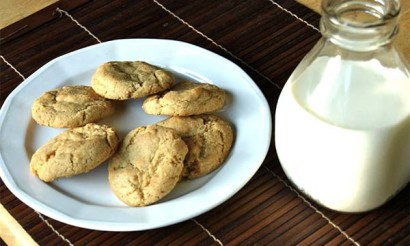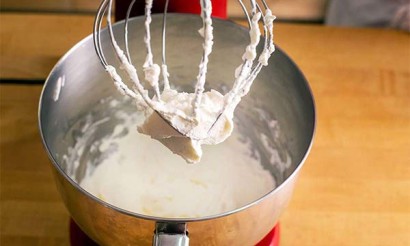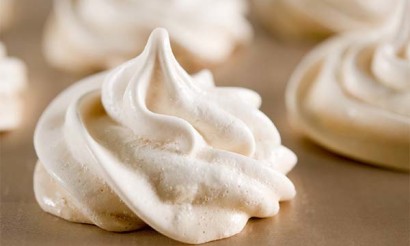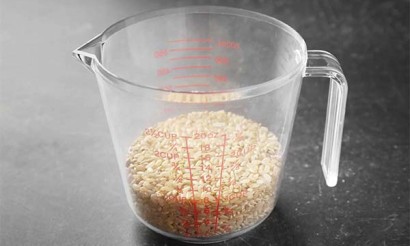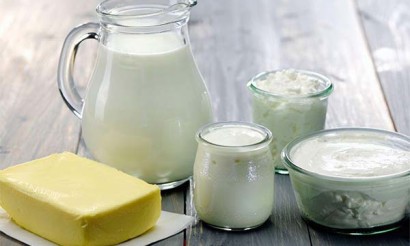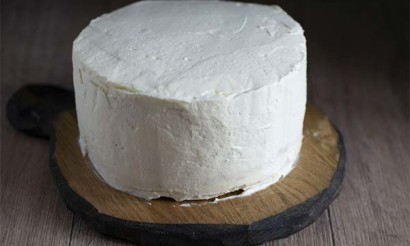How to fix a salted soup: pea, chicken, borscht
Salt in cooking is used to improve the taste of products. This component is especially important for vegetable dishes, because they contain a large amount of vitamins and mineral salts. In addition, salt works as a preservative. Thanks to this additive food becomes tastier and more appetizing. But it is important not to overdo it.
- How to properly salt soup: useful tips
- When to salt the soup: at the beginning or at the end of cooking
- How much salt to put
- What salt should not be put in the soup
- How to fix the situation if you put too much salt in the soup
- What spices and seasonings to use if you oversalted the soup
- How to remove excess salt from different soups
- Borsch
- Stishchi
- Mushroom soup
- Meat
- Pea or bean soup
- Sorrel soup
- Kharcho soup
- Solyanka soup
- Fish soup
- Cheese soup
If the dish turned out to be too salty, it is recommended to reduce the salt concentration, as it is not only not tasty, but also bad for health. The use of a large amount of salt leads to edema, increases blood pressure. Because of the salt, the water-salt balance is disturbed, which can cause atherosclerosis and stroke.
How to salt soup properly: useful tips
Even the most delicious and useful soup can be spoiled if you add an excessive amount of salt to it. This can be avoided if you try to taste the dish during cooking. Nevertheless, there are many ways to correct the over-salted taste of the dish. What to do if you can't serve over-salted soup, but want to throw it away?
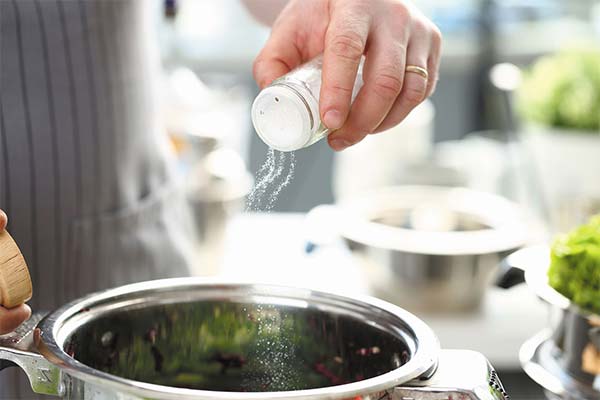
- Add salt in small pinches. Do not add big portions of salt at once, it is better to add it gradually, trying the broth to taste. You can start with 1 gram.
- Note that there are highly salty ingredients. Some soup products already contain a certain amount of salt. For example, a smoked ham or salty cheese already makes the broth more salty. When adding canned beans, they should be pre-washed to get rid of the salt that is added to the products to increase shelf life.
- To pass vegetables, give preference to unsalted butter. Butter is considered less harmful than vegetable oil, so many housewives prefer to cook vegetables in it. To avoid over-salting the soup in the end, it is better to use sweet butter rather than salted butter.
- It is recommended to make the base broth lightly salted. It is also possible not to salt it at all, but to add salt during cooking the soup.
- Give the housemates the opportunity to salt their own portion. People's tastes can vary. Some people prefer less salty dishes, while others are always adding more salt to their plate. If that is the case, it is worth giving them the option to add as much salt as they see fit.
- To get rid of the excess salt in the dish, it can be cooked in a lot of liquid, such as water, or in milk or meat broth, and best of all in brine.
When to salt the soup: at the beginning or at the end of cooking
It is better to salt after the broth boils. By adding salt at the beginning of cooking, there is a danger of over-salting the dish. There are several reasons for this:
- The salinity of raw broth is more difficult to assess on the taste.
- As it boils, some of the liquid evaporates, making the soup more concentrated and thus more salty.
- If you add salt to a fully cooked soup, the broth will not be evenly salted, and the cooked vegetables will not absorb the salt.
In addition, if you add salt at the beginning of cooking, there is a risk of ending up with a more salty taste, as the liquid evaporates during cooking, and the concentration of salt in the dish increases.
The best option is to add the spice 15-20 minutes before cooking. If borsch is being cooked, salt should be added to the vegetable stew, which is added to the soup a few minutes before cooking.
How much salt to put
There is no exact answer to the question of how much salt to put in the soup. The final taste of the product depends not only on the amount, but also on the quality of salt. You can put 1 tbsp, you can put 3 spoons. It all depends on how much meat and vegetables will be added, and the degree of cutting. It is best to put it "to taste". It is possible not to salt the soup in the pot at all, adding just the right amount to the plate.
What kind of salt is not put in the soup
In the art of cooking different types of salt are used, from the usual iodized to sea salt. Each has its own characteristics.
- Food, table salt, table salt. This is a general name that combines the types of salt we use in food.
- Sea salt is considered to be healthier than common salt. If you want you can add it to the soup, but you need to be careful not to over-salt it. Sea salt has more nutrients and no harmful impurities. It is believed that it retains its useful properties longer.
- Rock salt (sold in stores) is mined in mines. Its composition is different from sea salt. It has a lot of sodium and chlorine. For replacement use sea salt, which is extracted naturally. It is rich in potassium, magnesium, iodine, iron, calcium, and other minerals. This salt does not cause stomach irritation, so it is ideal for children's dishes.
- Iodized. For a healthy diet is recommended to use just such. But on the saturation of iodine such salt is inferior to sea salt.
- Salt with various flavors: spices and dried herbs.
To avoid the unexpected taste, you should either use iodized salt of fine grinding, or slightly reduce its consumption. It should be borne in mind that 1 kg of meat requires from 7 to 10 g of spice, and for 1 kg of vegetables or cereals from 30 to 40 g. It should be kept in mind that when using iodized salt, you can add sugar to the food.
How to fix the situation if you over-salted the soup
One of the easiest ways to get rid of excess salt in soup is to add water, vinegar or a spoonful of sugar. You can boil the same soup, but without salt, and mix it with the already cooked, thus reducing the concentration of spice.
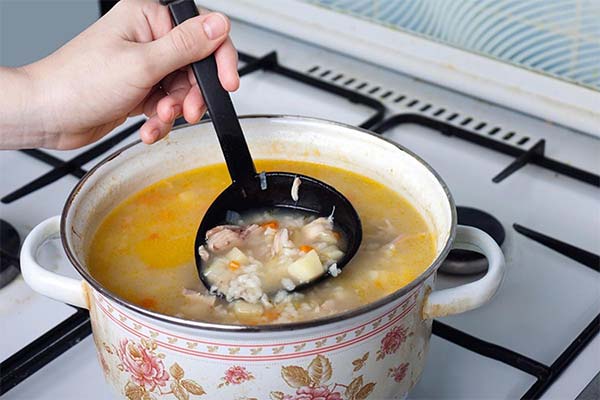
You can correct the excess salt by adding the following ingredients:
Celery and onions.
By adding these ingredients, you can achieve a new, more balanced flavor that interrupts the salty taste. Finely chop the greens, put them in the soup and simmer for about 30 minutes. This method is best for vegetable soups.
Food Acid
Sourness in a dish can balance out the saltiness. Citric acid, vinegar, or wine will add a sour taste.
Add a couple teaspoons of sugar
A little sugar will balance out the taste and soften the salty flavor. Add sugar in small portions, to taste.
Starch
Rice, potatoes, and pasta are starchy foods that absorb excess salt. You should add one of these ingredients and cook for about 30 minutes. The method works better in combination with others.
Nutmeg
This spice has a strong spicy flavor that can replace salt. You can make the spice yourself, or use a store-bought spice.
Ginger
Chopped ginger is added at the end of cooking. It will act as a kind of flavor enhancer and aroma.
Cream
Cream can soften the flavor. They are added to give a mild, creamy flavor to the puree soup.
What spices and seasonings to use if you over-salt the soup
It is acceptable to use fresh and dried herbs instead of salt. A mixture of herbs will bring out the flavor just as well as salt. For example, you can add a mixture of rosemary, parsley, oregano, and thyme. Both fresh herbs and dried seasonings will work well with the soup.
Important! Using ready-made seasonings, you need to familiarize yourself with the composition, as many of them contain salt.
Some people prefer to use garlic or lemon juice instead of herbs. Garlic can be added to soups, stews, and sauces. Very often, to give a new flavor and aroma to a dish, people add pepper, cloves, or cinnamon to it. These spices must necessarily be mixed with other herbs, otherwise they will dominate the taste instead of complementing it. You can use bay leaf, peppercorns and dried herbs as spices for first courses.
To get a tasty dish, it is very important not to overdo it with spices. It is best to add them in small portions. Sometimes it happens that one ingredient overpowers the flavor and aroma of another.
How to remove excess salt from different kinds of soups
The methods mentioned above can be considered universal for popular types of soups. But many varieties have their own specifics of cooking, as well as ingredients that differ, for example, in the degree of absorption of salt, or already have some in their composition. All this affects the final result. Let's take a closer look at the most popular first dishes and ways to remove excess salt from them.
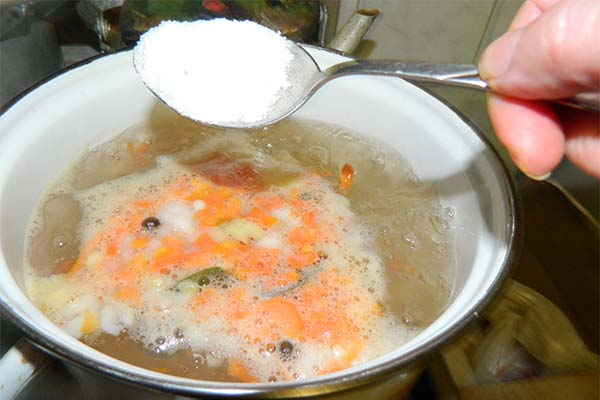
Borscht
To remove excess salt from borscht, you need to strain it. If the borsch has not yet been put in the roast, you can cook it with the addition of citric acid, which will neutralize these unpleasant moments. A piece of bread, served to the borscht, is also able to smooth out the unpleasant taste.
Stir-fry
An extra portion of potatoes can save the cabbage soup. To do this, you need to pour chopped potatoes and bring to a boil. Adding broth without salt is also an effective way. You can remove some of the cabbage from the broth, which absorbed the salt, replace it with fresh and bring it to the boil.
Important! It is advisable to salt the cabbage soup once it is ready, so that it does not absorb too much salt.
Mushroom soup
Mushroom soups are hearty, tasty and nutritious. Such treats can be prepared according to different recipes, but it is important to know how to salt the soup to make it more flavorful and tasty. If you do not know all the nuances of cooking, the taste will be ruined.
Salt mushroom soup is better at the end of cooking, as mushrooms absorb salt well. To make the mushroom soup less salty in taste, you can add sour cream to a serving plate. It will make the taste more delicate and not so salty. Also, if you get too much salt, it is recommended to take out the mushrooms and boil them for a few minutes in boiling water.
How to remove salt from mushroom soup:
- The easiest way to remove excess salt from the soup in seconds is to add water to the pot and bring it to a boil.
- If you need to remove excess salt from the mushrooms after boiling them, place the mushrooms in a colander and rinse under running water.
- Parsley is a great way to get rid of excess salt in the soup. It is not necessary to use all the greens at once, it is enough to put a few sprigs, for example, at the very end of cooking.
Important! If foam has appeared on the surface of the soup after boiling, it must be removed immediately. This is done with a slotted spoon.
Meat
- Part of the meat broth can simply be drained by adding new or water. And then the broth will no longer have such a salty taste.
- You can add some noodles to soup with meat: the starch contained in the pasta will absorb the excess salt.
- Some salt will absorb a bag of rice, starch or flour. You need to put it in the boiling broth, hold it for a while and take it out. The dish will become less salty.
- It is also worth remembering that when cooking any meat broth, less salt should be added than when cooking vegetable broth (in the second case, you need to put more salt).
- Various seasonings, spices, roots and onions are added to broth cooked with meat or poultry. These components give additional flavor and aroma.
Another recommendation: when cooking meat soups, as well as other first courses, you can add spices, such as cumin, bay leaf, thyme, marjoram, roots, onions, celery, parsnips, etc. As well as herbs: parsley, dill, coriander.
Pea or bean soup
Pea soup is a very useful product, it is difficult to imagine our cuisine without it. And there are fans of pea soup with roasted or tomato paste with garlic. The cause of over-salted soup may be related to the quality of the peas. It could be unripe, or poorly dried.
Remove excess salt by straining the soup through a sieve, and put them in a new unsalted portion of the broth. After this, the soup is brought to a boil.
If used for cooking canned beans, it must be rinsed. Pea soup puree can be diluted with cream.
Sorrel Soup
In addition to adding lean broth, there is another effective method for this kind of soup: beat an egg into the soup. Thanks to this method, you get a transparent and not very rich soup with a delicate base.
Kharcho soup
The easiest way to get rid of excess salt is to take the vegetables out of the soup, and replace them with freshly cooked ones.
Hodgepodge Soup.
Smoothing out the overly salty taste of hodgepodge will help by adding sour cream. Also, as in the case of sorrel soup, you can use a beaten egg.
Solyanka, as well as soups of the summer type, can be acidified with lemon juice or vinegar. This ingredient will only benefit the taste of the hodgepodge.
Fish soup
This type of soup should be singled out separately, because its preparation takes a lot of effort, and it is very frustrating to get a dish that is inedible in the end. There are several ways to correct the mistake:
- Dip a whole onion into the pot and boil it, after which it should be removed.
- Add cereals, such as pearl barley, which makes the soup more rich.
- Add a raw egg.
Over-salted fish soup can also save the potatoes. To do this, put a couple of whole peeled potatoes in a pot for 10 minutes, and then take them out.
Cheese Soup.
Depending on how you cook it, cheese soup can be diluted with unsalted broth, or you can add boiling water. If the cheese soup was made with cream or milk, you can dilute with these ingredients. Sour cream and fragrant fresh herbs will help to overpower the taste of salt.
Cheese soup is often cooked in the concentration of mashed potatoes, so adding cream would be ideal. From this, the soup will not lose its flavor, and will become even more delicate.
Croutons added to the plate will absorb salt when soaked. Croutons can be made from white and rye bread.
«Important: All information on this site is provided for informational purposes only for informational purposes only. Before applying any recommendations, consult a health care professional. specialist. Neither the editors nor the authors shall be liable for any possible harm caused by materials."

